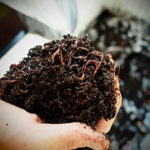How Houseplants Clean Your Indoor Air
In the late 1990s, when I interviewed B.C. Wolverton about his new book, How to Grow Fresh Air: 50 House Plants that Purify Your Home or Office, indoor gardeners everywhere cheered. Finally, houseplants were getting the recognition they deserved. Wolverton’s book proved what many indoor gardeners suspected all along. In addition to beautifying your home, houseplants clean the air, making the indoors a healthier place to be.
Now we know that not only does an indoor garden make your home more beautiful, the plants work 24/7 to scour the air of harmful chemicals, so you can breathe easier.
B. C. Wolverton expert on houseplants and indoor air quality
Wolverton knows what he’s talking about. When his book came out in 1997, he had worked for nearly 20 years for NASA developing technology that would enable humans to live in closed environments on the moon or Mars. His research showed that houseplants act as the lungs and the kidneys of buildings. They are the quickest and most effective filters of dangerous, common air pollutants, such as ammonia, xylene, benzene and formaldehyde. Such chemicals cause everything from allergy and asthma symptoms to sick building syndrome.
How indoor plants clean the air
Houseplants clean indoor air in two ways. They absorb pollutants into their foliage and the dangerous chemicals make their way to their roots where the houseplant transforms them into useable food for the plant. They also emit water vapors that create a pumping action that pulls dirty air to the roots where it is also converted into plant food.
Houseplants scour the air of chemicals, mold
And for those with allergies and asthma (like me), there is more good news. Despite the advice by doctors to not have plants and their soil indoors, the opposite is actually true. According to Wolverton’s research, it’s not plants that give off mold and mildew spores, but the soil. As a matter of fact, plants actually reduce molds and mildews in the air. “Our research shows that plant-filled rooms contain 50% to 60% fewer airborne molds and bacteria than rooms without plants,” Wolverton says.
Grow many houseplants to clean indoor air
Because of the obvious benefits of having houseplants to clean the air, Wolverton suggests growing as many houseplants as possible (hooray!), especially within what he calls your “personal breathing zone.” This is a 6 to 8 cubic foot area where you spend several hours each day—such as your desk and bed.
“The closer the plant is to you, the better,” says Wolverton. “Even in large, open rooms, a plant within your personal breathing zone really improves the air you breathe.”
In his book, Wolverton identifies 50 of the best houseplants for cleaning the indoor air. The plants are rated on various capabilities, including how well they remove chemical vapors, their transpiration rate and how easy they are to grow, including pest resistant.
Best house plants to improve indoor air quality
Here’s a few of the indoor plants mentioned in Wolverton’s book to improve indoor air quality. Many are common house plants.
Aloe veraAnthurium
Arrowhead vine
Boston fern
Chinese evergreen
Christmas and Easter cactus
Croton
Dieffenbachia
corn plant
English Ivy
Ficus (alii, benjamina)
Norfolk Island pine
OrchidsOrchid phaleanopsis)
Palms (areca, lady, bamboo, dwarf date, parlor)
Peace lily
Peacock plant
Philodendron
Pothos
Prayer plant
Rubber plant
Sansevieria
Schefflera
Spider plant





